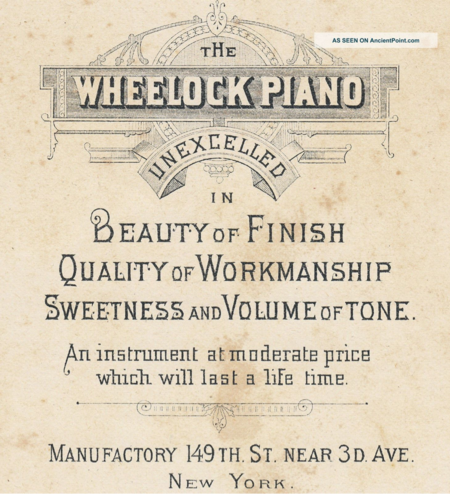

#AEOLIN WHEELOCK BABY GRAND PIANO SERIES#
Generically, such piano playing instruments, which sat in front of normal pianos and played them by means of a series ofįelt-covered fingers, were known as Piano Players.

"musical art"), manufactured by Tonk Brothers of New York, whose other unintentional legacy to the musical world was the Proprietary names, including the Angelus, the Cecilian, the Apollo, the Simplex, and perhaps most wittily, the Tonkunst (German for Its Pianola should have taken on a generic quality, and in truth most of its competitors' instruments had their own Aeolian was no doubt secretly delighted that Took one or two of its competitors to court for infringement of the trade mark. Successful that its name came to be used by the public for almost any type of player piano, and the Aeolian Company shrewdly To the Smithsonian Institution, Washington, on 1st December 1922.Īt the start of this historical overview, we should define the most important terms. The photograph records the presentation of Piano-player, ultimately called the Pianola. Votey (right) with his first limited production model of The first truly musical piano-playing device in the world.Įdwin S. Particular contribution was to draw together a number of existing mechanisms which rendered his creation Pianola and its competitors were not simply the invention of any one person E. S. Votey's The Aeolian Company, which put the instrument on sale in the USA in the autumn of 1898, and in Europe a month or two later.

Workshop at his home at 312, Forest Avenue East, Detroit, by the spring or summer of 1895. The first true Pianola was completed by Edwin Scott Votey in a Cover of the first Aeolian Company Pianola Catalogue - New York, 1898.


 0 kommentar(er)
0 kommentar(er)
